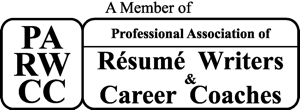iStock | BRO Vector
When it comes to looking for a job, a lot of emphasis is given to the big three – your resume, cover letter, and LinkedIn profile are some of the most essential pieces of your search. But job seekers have many other tools at their disposal. Each job process has its own challenges but are united by one thing, when you’re in the room you’re a salesman and the product you’re selling is you. Elevating yourself over other candidates is the ultimate upsell.
Other than your dazzling personality and confidence, when you want to leverage more than the big three, you may consider adding the following arrows to your quiver:
References Lists – References matter. If references aren’t requested during the application process, they are optional. It is to your advantage to have a list of references ready and waiting to go. Your references are professionals you’ve worked with or for and will attest you’re a find. Having people advocate on your behalf means something and the fact you’ve volunteered to provide references does too. Be assured, recruiters and hiring authorities often call your references so be sure you’ve had a conversation with them in advance so you know what they’re going to say – don’t assume a former boss or co-worker will give you a gushing review. Make sure.
Reference Letters – Not to be confused with a list of references as described above, this a hard copy letter you have on your person that you can hand over in a job interview. That means you have to ask a potential reference to sing your praises in writing. That’s a big ask but if you can get it, that says a great deal about your character and reduces the recruiter or hiring manager’s task list (which is appreciated, remembered, and factored in). In the US, reference letters aren’t prevalent among professionals, but in Europe, for example, there are places a written reference letter is common, even expected, so if you want to work overseas you may want to consider going this route.
Portfolios – Portfolios are a must for creatives, such as graphic designers. It’s essential to show your best work in the best ways. You should consider creating a traditional portfolio you take into the interview room and a digital version. This is another opportunity to expose recruiters and hiring managers to your work and skill sets. It’s also to your advantage to exploit the best aspects of both formats – traditional and digital. Naturally each version should include a mix of your best and most recent work, but the formats are different so use their unique strengths to your advantage. If you want to take a deeper dive on portfolios check out this past article, “The Portfolio.”
Presentations – During the course of your professional career, you may have worked on a special project, executive presentation, or some act of gravity that had a direct positive impact on achieving whatever goals had been set out. If you have metrics to support that narrative, any related documentation can be an asset. If, for example, you have professional proposal (e.g., business proposal for funding), a power point (e.g., marketing strategy), audio/video recordings, lectures, etc., that may advance your candidacy nobody will fault you for using them to demonstrate the value you will add to whatever role you pursue.
Work Samples – If you’re in a field that makes stuff, like product design and development, you may have played an integral in producing goods that amount to three dimensional portfolios. Maybe you’re an architect with a model of one of your designs that was built, a product developer who created or worked on a best-selling product, or are in specialty industry like robotics (yes, robotics) or 3-D printing (most recently projected to be a $67 billion year industry by 2028) and have impressive toys to share with the class. Use it all.
Day One Plan: This is the casino special. A high risk, high reward special assignment you undertake just for this employer to present at your interview. You create, for example, a plan specific to the role you’re trying to get that details what you would do on Day One and beyond. Think 30-day, 60-day, 90-plans. Whatever you can legitimately represent as a realistic pathway given the limited information you may have. You can’t know the inner workings or strategic plans of a potential employer and to assume that position would be overplaying your hand. What you can offer is the methodology you will employ in the role, the tools you will you use to measure your progress, and the benchmarks (e.g., KPIs) you hope to achieve.
Philip Roufail contributed to this article.
Scott Singer is the President and Founder of Insider Career Strategies Resume Writing & Career Coaching, a firm dedicated to guiding job seekers and companies through the job search and hiring process. Insider Career Strategies provides resume writing, LinkedIn profile development, career coaching services, and outplacement services. You can email Scott Singer at scott.singer@insidercs.com, or via the website, www.insidercs.com.






